[Editor’s note: This article runs in a new section of The Tyee called ‘What Works: The Business of a Healthy Bioregion,’ where you’ll find profiles of people creating the low-carbon, sustainable economy we need from Alaska to California. Find out more about this project and its funders.]
Few things get trucking mini-magnate Keith Wilson more excited than a spreadsheet spitting out a smashing business case. The owner of Titan Freight Systems and recent entry in Portland, Oregon’s mayoral race waxes passionate on fighting homelessness, economic stagnation and climate change. But first and foremost, Wilson is a business person. And he beams as he computes the electrification of Titan’s fleet of delivery trucks and freight haulers.
“Look at my return on investment. Holy cow! It’s a 52 per cent cost reduction versus a diesel vehicle. That just takes your breath away,” says Wilson, cranking the numbers on a novel fleet electrification scenario in real time.
Proof, he says, that one can clean up on cleaning up. “Not only does it pay. It is incredibly profitable,” says Wilson.
Wilson can project big gains because he’s tapping into rich government supports designed to push electric motors into heavier vehicles and thus drive polluting internal combustion engines off the road. He’s also getting some help from the electrical utility that serves Portland, which stands to gain as the region replaces diesel fuel with its electricity.
Electrification is advancing fastest in passenger cars, which are relatively light and thus easiest to propel hundreds of kilometres on battery power. But trucks contribute far more greenhouse gas emissions and local air pollution, vehicle for vehicle. The dirtiest are medium- and heavy-duty trucks weighing more than 10,000 pounds, including Titan’s box trucks and semis, as well as school and transit buses and garbage trucks.
As a result, electrifying big trucks promises outsize impact.
West Coast states and British Columbia, and the federal governments in Canada and the United States, seek to seize that opportunity by offering rebates, tax incentives and clean fuel credits to help fleet operators such as Titan overcome electric trucks’ premium price.
Here’s how the supports stack up for Titan.
Titan paid a seemingly profit-crushing US$402,000 a pop for three electric semi trucks manufactured in Portland by Daimler subsidiary Freightliner. That’s nearly three times as much as diesel models of Freightliner’s Cascadia Class 8 semis. And the company paid another $90,000 each to install charging stations.
“It’s intimidating. Most people won’t even go beyond that first glance,” says Wilson.
But the purchase price is just the first data point toward calculating what really matters: total cost of ownership.
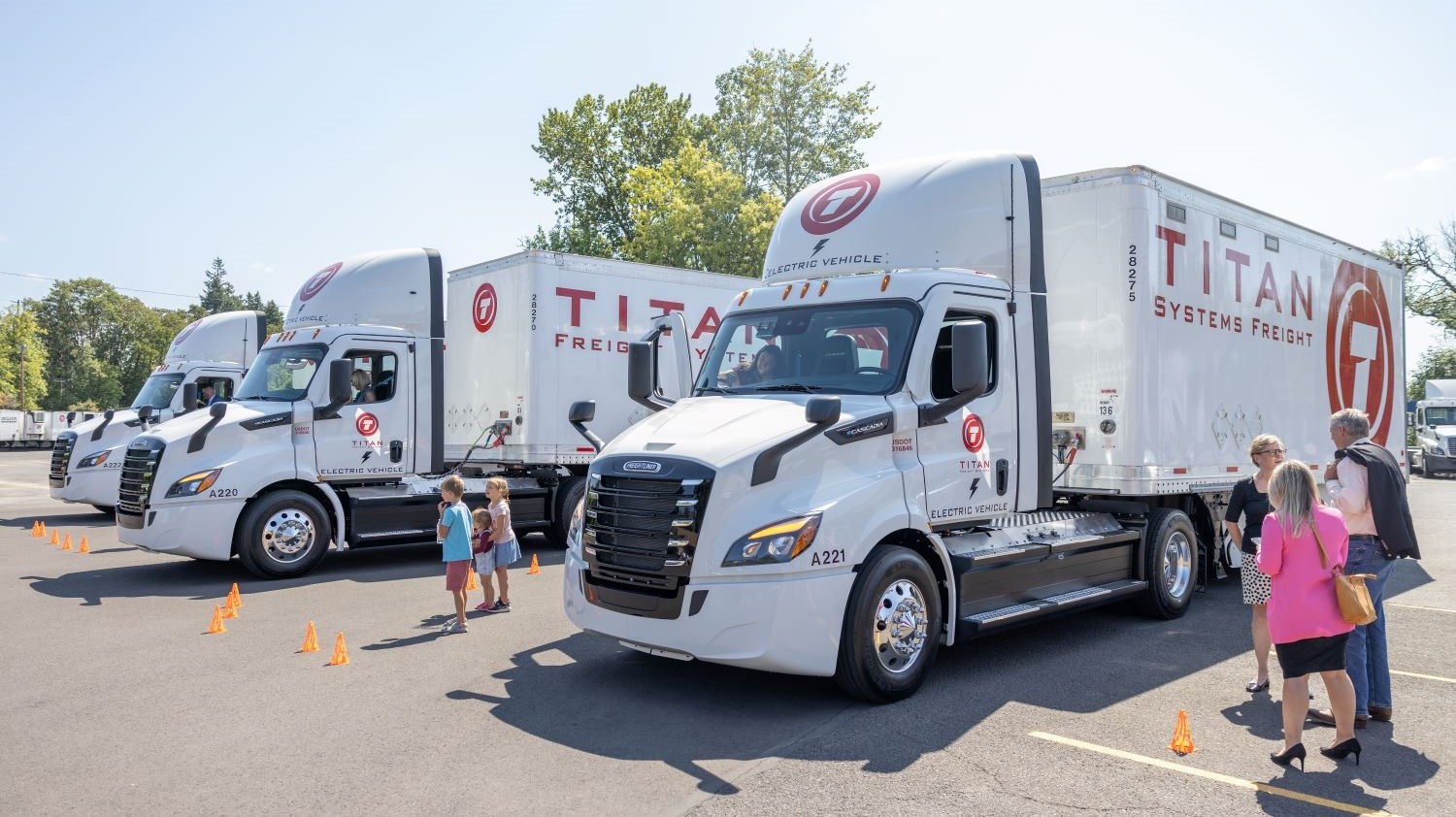
Wilson expects state and federal rebates to slice US$160,000 per truck off of his upfront cost, and $16,000 off of each charger. Then there’s the electrics’ maintenance advantages: they don’t need oil changes and, thanks to regenerative braking that slows the vehicles by sucking energy out of the wheels, brake pads last longer.
Next there’s the electrics’ cheaper fuel. Running a Class 8 freight-hauling truck on diesel costs Titan about 65 cents per mile, compared with just 23 cents per mile to charge batteries.
Finally, Oregon’s low-carbon fuel program — akin to those in B.C., Washington state and California — taxes dirtier fuels to subsidize the use of their replacements. For Titan’s electric semi trucks, the resulting 36-cent kickback per mile travelled actually exceeds their fuel cost. As Wilson puts it: “I’m getting paid to operate an electric truck on the roads in Oregon.”
Roll it all up and Wilson projects that he’ll spend $349,000 financing, fuelling and maintaining each electric Cascadia over their first decade of operation. That’s 13 per cent less than the diesel semi that looked so cheap at first glance.
Wilson judges that advantage to be “good.” He’s more jazzed about the bottom line for Titan’s trio of Class 6 trucks. Smaller than the Class 8 semis that pull trailers, Class 6 vehicles are the kind of box trucks you see delivering goods to businesses. Wilson predicts his electric Class 6 delivery trucks will be 25 per cent cheaper, all in, than the diesel versions. “Now that’s meaningful money,” says Wilson.
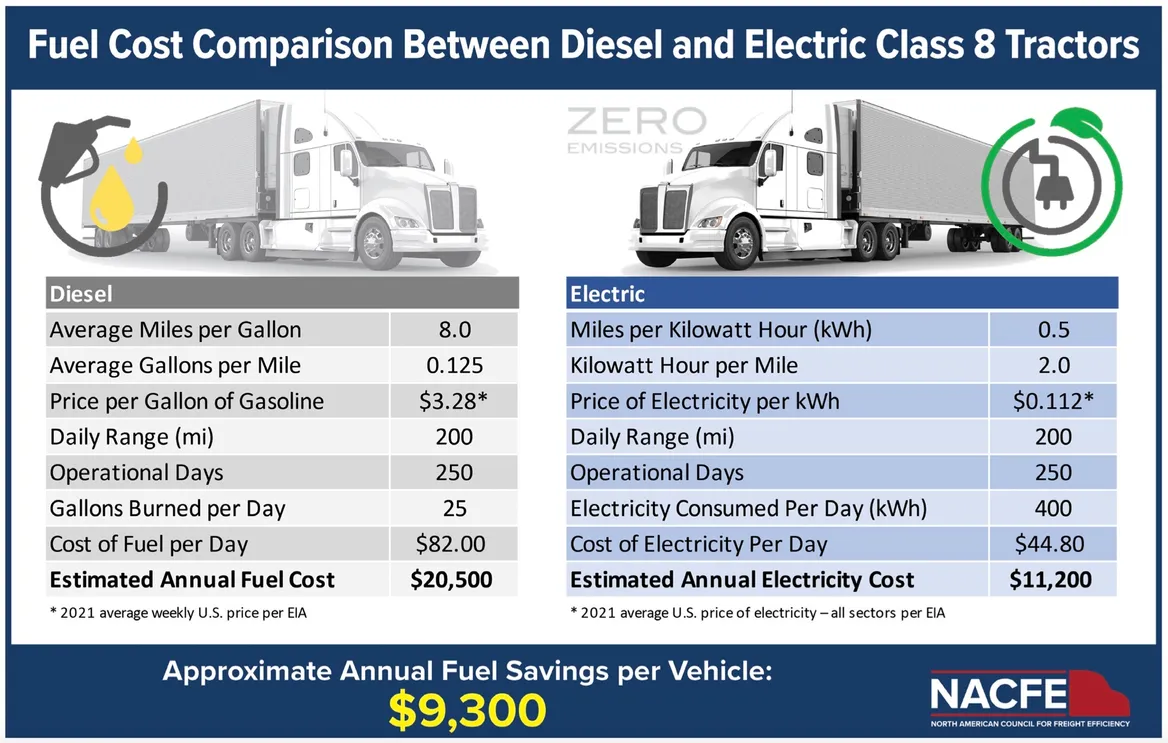
Life isn’t always easy on the bleeding edge of zero-emissions trucking. During Titan’s first weeks with its electric trucks, faulty settings caused its chargers to turn on before a discounted overnight charging rate negotiated with utility Portland General Electric kicked in. “We get our first electric bill and we were astounded. It was like $5,000, and it was supposed to be $500,” says Wilson.
But that’s a fraction of what he concludes Titan is saving.
That 52 per cent savings that Wilson calculated in real time for The Tyee is what he expects from his next set of Class 6 electric trucks. They will use the charging stations that Titan has already installed and thus will come online for $74,000 less.
Based on that calculation, Wilson told Titan’s chief operating officer that, from now on, all of its medium-duty truck purchases should be electric.
That’s not yet true for Class 8 trucks, thanks to their currently limited range. The Freightliner electric Class 8s’ dashboards show 200 miles of range each morning, but Titan limits them to 150-mile routes to account for poor weather and tougher terrain that increase battery drain.
A 150-mile practical range suffices for Titan’s heavy runs around Portland. Most of its Class 8 trucks must handle longer routes, however, shuttling between southern Oregon and the B.C. border. (They ran up to Vancouver as well until a recent shortage of drivers forced them to retrench.)
So Wilson is still buying new diesel trucks for Titan’s long-haul trips.
But electrics that go the distance may not be far off. Wilson says Titan may be testing one this month: a sleek semi that looks like the front end chopped off a bullet train. Its Fremont, California-based manufacturer, Terraline, claims that production versions will have a 500-mile range.
Terraline also claims that its truck can plug into 500 kilowatts of electricity — about triple the Freightliners’ charging limit — to refuel in under an hour. “I can get this guy to a truck stop, have a full charge and then go another 500 miles,” says Wilson. “This is showing you how fast the market is moving.”
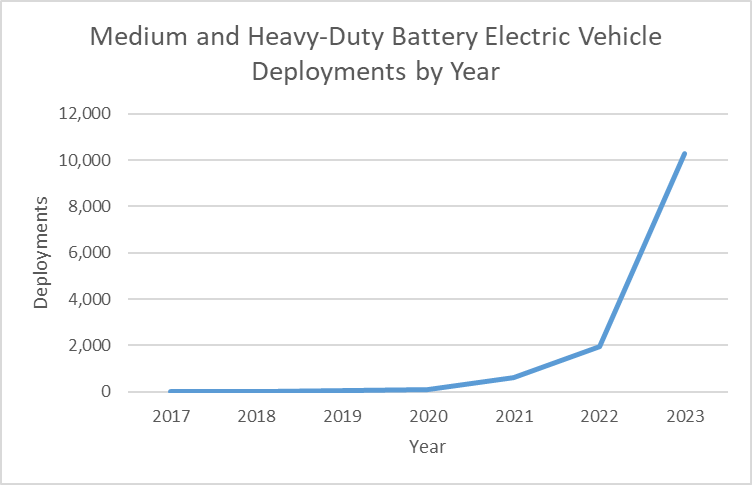
The situation north of the border varies greatly by province, with B.C. offering the most robust incentives to electrify truck fleets and Quebec in second place, according to Meena Bibra, senior policy adviser for advocacy group Clean Energy Canada.
A growing pile of studies back up Wilson’s experience and expectations. The studies foresee rapid cost reductions, thanks to improvements in battery technology as well as the increased scale of production driven by tapping those government supports. According to one count, early adopters like Titan in the United States have already committed to deploy more than 19,000 medium- and heavy-duty electric trucks (including those equipped with hydrogen tanks and fuel cells to generate power on board).
The U.S. National Renewable Energy Laboratory has projected that electric trucks of all classes will compete head-to-head with diesel vehicles by 2035 — and that’s without subsidies for the electrics. NREL bet that box trucks and short-haul semis akin to Titan’s will get there by 2030, along with all manner of buses.
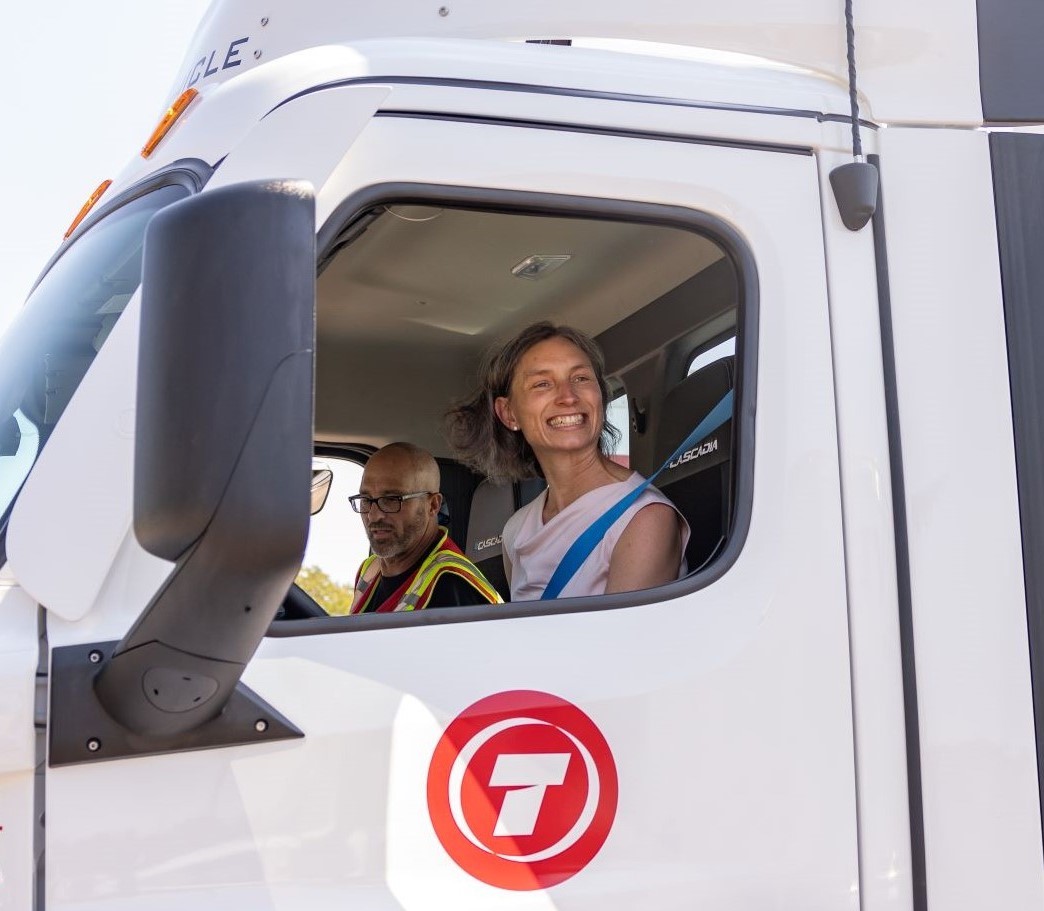
B.C. offers up to C$150,000 in rebates, depending on truck class, and that can be stacked with a federal incentive topping out at C$200,000. For a Class 6 truck in B.C., those can cut the upfront cost in half. Then factor in fuel and maintenance savings, and Bibra’s group projects that the electric Class 6 truck will deliver C$26,000 in net savings over six years. That’s about a nine per cent advantage over an equivalent diesel box truck. That’s before revenues from B.C.’s clean fuel program kickbacks, which Bibra calls “quite an important factor for fleets.”
Bibra notes that B.C. also covers some of the cost of charging infrastructure, including chargers and upgrades to a firm’s electrical service. And the province also offers advisers to assess each operator’s requirements and options. “Overall it’s a good news story,” she says.
Wilson is unapologetic about the incentives required to jump-start the transition. “Fossil fuels are still subsidized at $7 to every $1 for renewables right now,” says Wilson, counting especially advantageous tax treatment of oil and gas assets. “The fossil fuel industry is getting like $20 billion in credits every year.”
Wilson has a track record for being among the first to catch waves that cost-effectively cut dependence on fossil fuels.
Titan was an early adopter of aerodynamic trailer upgrades to cut fuel consumption, and more recently he started filling his terminals’ fuel tanks with a cleaner-burning bio-based version of diesel fuel. Since 2021 Titan’s Portland-based distribution hub has operated 100 per cent fossil-free.
He’s not shy about it. Wilson evangelizes about cleaner energy and climate change from within a notoriously conservative trucking industry, and in a state where climate denial remains commonplace outside of liberal enclaves like Portland and Eugene.

When The Tyee covered Titan’s adoption of renewable diesel fuel in 2021, the company’s operations manager worried aloud whether Wilson’s evangelism might put their drivers at risk.
But the industry appears to be coming around.
More firms are buying renewable diesel as word gets out that it’s cheaper than petroleum diesel when one factors in clean fuel payments, reduced maintenance and other benefits. Wilson notes that diesel exhaust is a leading cause of emphysema, lung cancer, respiratory disease, eye irritation and asthma among truck mechanics and drivers. So cleaner-burning renewable diesel — and even more so electrification — improves employee safety and satisfaction.
Cleaner fuels also address one of Oregon’s most important climate impacts: accelerating snowmelt in the Cascade mountains leading to water shortages in the summer and fall. Trucks plying the highways on either side of the Cascades are the largest source of soot that lands on the snow, absorbs sunlight and thus exacerbates the impact of rising temperatures. Burning of forestry slash has a similar impact.
Wilson has taken solutions to those dual climate culprits to Oregon’s legislature. He claims that he’s getting traction in the state capitol for a bill he crafted in 2020 to phase out petroleum diesel in Oregon. The state senate majority leader signed on to the bill last year. Also last year, a bill motivated by Wilson to encourage conversion of forestry leftovers to clean fuels cleared committee with unanimous, bipartisan support; it was ultimately signed into law as part of a larger package.
This year he’s pushing lawmakers to put Oregon tax dollars behind a proposed high-speed passenger train linking Portland, Seattle and Vancouver.
The leading plank for Wilson’s mayoral bid is to end unsheltered homelessness within 12 months. But green ambitions are also part of his platform, starting with the city’s roughly 2,000-vehicle fleet.
“Portland can be the greenest city and lower our operating costs at the same time,” says Wilson. “At least, that’s what I’ve experienced at Titan.” ![]()
Read more: Energy, Transportation, Environment




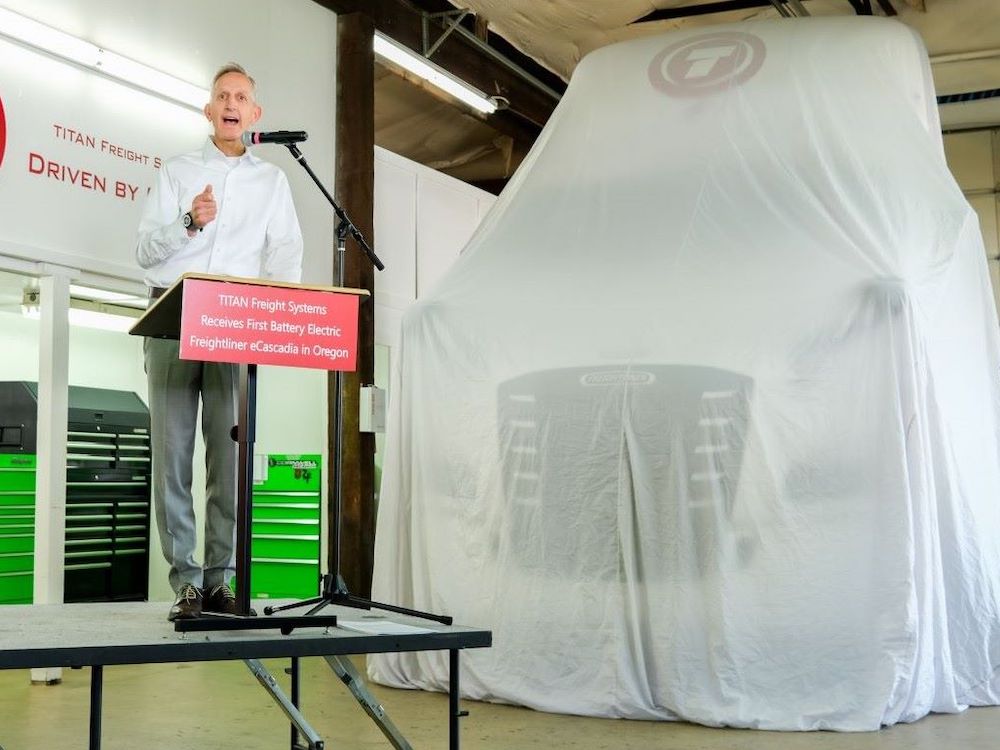












Tyee Commenting Guidelines
Comments that violate guidelines risk being deleted, and violations may result in a temporary or permanent user ban. Maintain the spirit of good conversation to stay in the discussion and be patient with moderators. Comments are reviewed regularly but not in real time.
Do:
Do not: